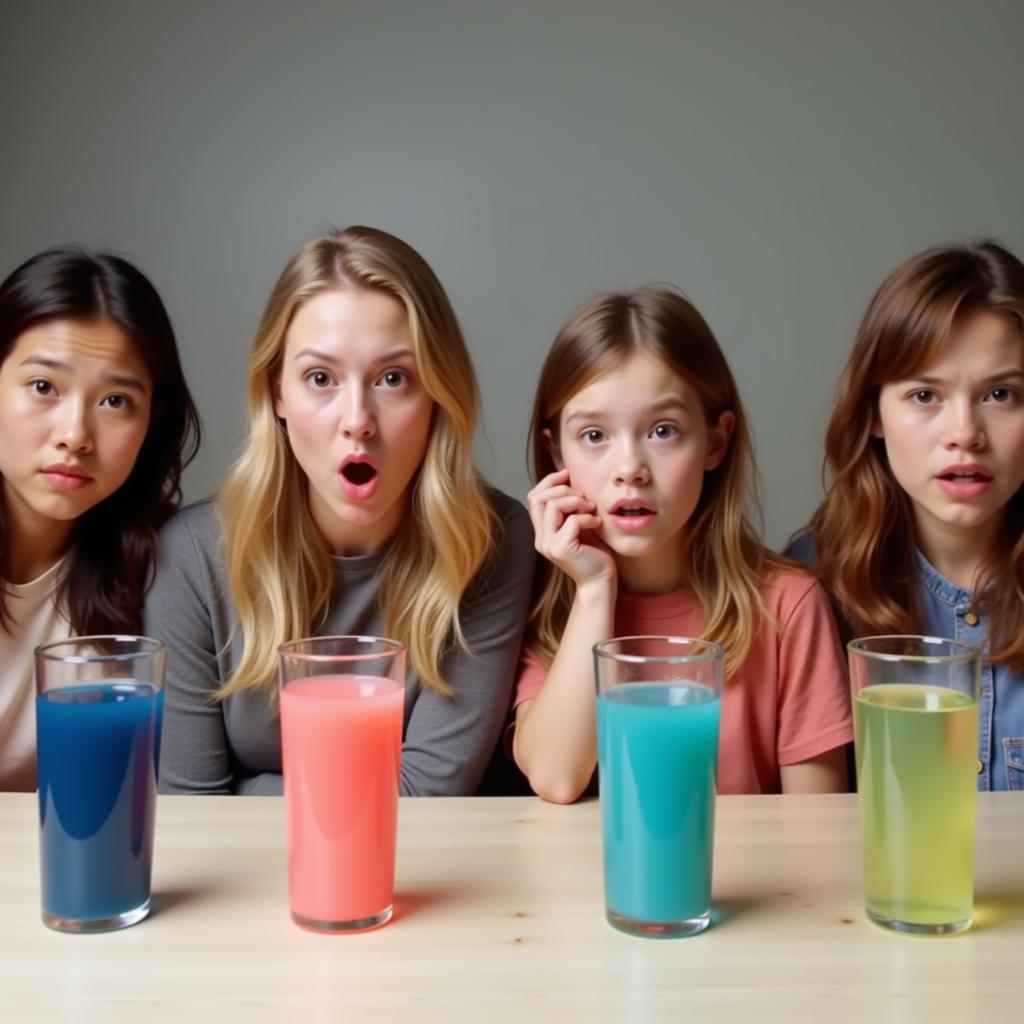Does color affect taste? This intriguing question has captivated scientists and foodies alike for decades. We delve into the fascinating world of sensory perception to explore the intricate relationship between what we see and what we taste, examining the scientific research behind this phenomenon and its implications.
The Psychology of Color and Taste
Our senses don’t operate in isolation. They collaborate, creating a symphony of perception that shapes our experience of the world. Color, a powerful visual cue, plays a significant role in this sensory interplay, often influencing our expectations and perception of flavor before we even take a bite. Think about a bright red strawberry; its vibrant hue primes us to anticipate a sweet, tart taste. But what happens when the color doesn’t match our expectations?
Research suggests that altering the color of a food can drastically change our perception of its taste. Studies have shown that people struggle to identify familiar flavors when the color is manipulated. Imagine a green-colored orange juice; even though it might taste exactly like orange juice, the unexpected color can lead to confusion and even aversion. This demonstrates how heavily we rely on visual cues to guide our taste buds.
 Color Taste Experiment
Color Taste Experiment
Scientific Evidence: Does Color Affect Taste?
Numerous studies have investigated the influence of color on taste perception. One classic experiment involved coloring a white wine red. Wine experts, fooled by the unexpected hue, described the wine using typical red wine descriptors, demonstrating how color can override even trained palates.
Another study explored the effect of color intensity on perceived sweetness. Participants rated brighter-colored solutions as sweeter, even when the sugar content was identical to less intensely colored solutions. This suggests that color saturation can amplify our perception of certain tastes.
How Does Color Influence Taste?
The connection between color and taste is complex and multifaceted. While the exact mechanisms are still being unravelled, several theories offer explanations:
- Learned Associations: We develop associations between colors and tastes throughout our lives. From a young age, we learn that certain colors correspond to particular flavors, like the green of a lime or the yellow of a banana. These learned associations shape our expectations and influence our taste perception.
- Cross-modal Sensory Interactions: Our senses constantly interact, and information from one sense can influence another. This cross-modal interaction is evident in the case of color and taste, where visual input from the color of food can modify neural activity in taste-related brain regions.
- Emotional Responses to Color: Colors evoke different emotional responses. Red, for example, is often associated with excitement and intensity, while blue is linked to calmness. These emotional responses can further influence our taste perception, adding another layer of complexity to the sensory experience.
Beyond the Basics: Color, Branding, and Marketing
The impact of color on taste extends far beyond the laboratory. In the world of food and beverage marketing, color plays a crucial role in branding and consumer perception. Companies carefully select colors for packaging and product presentation to enhance the perceived flavor and appeal of their offerings.
Consider the vibrant colors of candy wrappers or the deep, rich hues used to advertise coffee. These color choices are strategically made to evoke specific taste associations and attract consumers.
Utilizing Color in Culinary Creations
Chefs and food stylists also understand the power of color. They use color contrasts and combinations to create visually appealing dishes that tantalize the taste buds. A splash of vibrant green herbs against a backdrop of creamy white sauce not only enhances the aesthetic appeal but also contributes to the overall sensory experience.
Conclusion: Does Color Affect Taste Research Confirms the Link
The question, “Does color affect taste?” is answered with a resounding yes by numerous research studies. Color influences our taste perception through learned associations, cross-modal sensory interactions, and emotional responses. From the laboratory to the supermarket, the impact of color on taste is undeniable. So, the next time you savor a delicious meal, take a moment to appreciate the intricate interplay of senses that makes it so enjoyable.
 Food Presentation Color Influence
Food Presentation Color Influence
FAQ
-
Can color completely change the taste of food? While color can significantly influence taste perception, it cannot completely transform the fundamental flavor profile.
-
Does everyone experience the same color-taste interactions? Individual experiences can vary based on factors like cultural background, personal preferences, and learned associations.
-
How can I use color to enhance my cooking? Experiment with contrasting colors and vibrant hues to make your dishes more visually appealing and enhance the dining experience.
-
Are there any negative effects of color on taste? Mismatched colors can lead to confusion and even aversion, demonstrating the importance of color consistency.
-
How do food companies use color in marketing? Companies carefully select colors for packaging and advertising to evoke specific taste associations and attract consumers.
-
What is cross-modal sensory interaction? It’s the phenomenon where stimulation of one sense influences the perception of another, as seen with color and taste.
-
Does color intensity affect taste perception? Research suggests that brighter colors can amplify the perception of certain tastes, like sweetness.
Need Help with Your Paranormal Research?
For further assistance with any paranormal inquiries or research needs, don’t hesitate to contact us:
Phone: 0904826292
Email: research@gmail.com
Address: No. 31, Alley 142/7, P. Phú Viên, Bồ Đề, Long Biên, Hà Nội, Việt Nam.
Our 24/7 customer service team is ready to help!